Search
Remove Ads
Advertisement
Summary 
Loading AI-generated summary based on World History Encyclopedia articles ...
Search Results
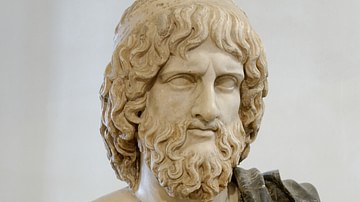
Definition
Pluto
Pluto is the god of the Underworld in Roman mythology. His Greek counterpart was Hades. Pluto chose never to sit on Olympus with the other gods and goddesses, preferring to remain in the Underworld. Family Pluto (Hades) was the son of...

Interview
Interview: UNESCO Archives Digitization Project
Ancient History Encyclopedia has partnered with the UNESCO Archives, which we are very excited about. Our mission aligns very much with UNESCO, wanting to bring about peace and international understanding to the world through cultural heritage...
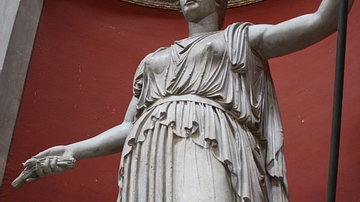
Definition
Ceres
Ceres is the goddess of agriculture and the harvest in Roman mythology. Her favor would bring humankind plentiful harvests and fruitful crops, but her wrath brought blight, drought, and famine. Usually depicted as a matron, her symbols included...
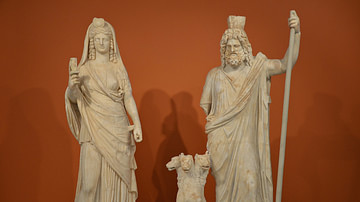
Image
Statue Group of Persephone-Isis and Pluto-Serapis with Cerberus
Statue group of Persephone (as Isis) and Pluto (as Serapis) with the three-headed dog Cerberus. From the Sanctuary of the Egyptian Gods at Gortyn on the island of Crete. Mid-2nd century CE. Heraklion Archaeological Museum. Pluto-Serapis...

Image
Bust of Pluto, Palazzo Altemps
A Roman bust of Hades/Pluto, based on a 5th Century BCE Greek original. (National Roman Museum, Palazzo Altemps)
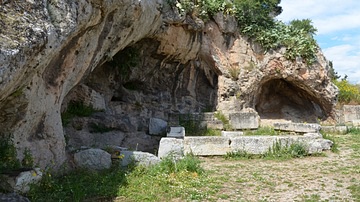
Image
Sanctuary of Pluto at Eleusis
The Sanctuary of Pluto/Hades was a peribolos wall enclosing a cave through which Pluto brought Kore back from the underworld. The small temple was built c. 328 BCE but was remodeled on many occasions from the 4th century BCE down to Roman...
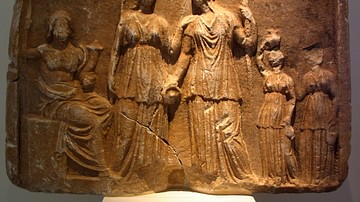
Image
Persephone, Demeter, & Pluto Marble Plaque, Tegea.
A marble plaque from Tegea depicting Pluto, Demeter and Persephone with worshippers. 4th-3rd century BCE. (National Archaeological Musem, Athens)
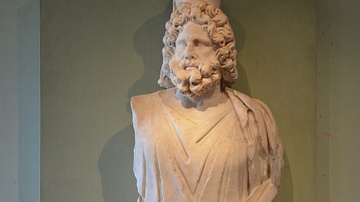
Image
Serapis Depicted as Pluto
The Egyptian deity Serapis, with a modius on the head, is depicted as Pluto. Next to him stands the three-headed dog Cerberus, guardian of Hades and the Greek underworld. From the Roman Villa of Chiragan, France. (Musée des Antiques de Toulouse...
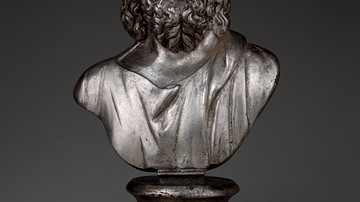
Definition
Serapis
Serapis is a Graeco-Egyptian god of the Ptolemaic Period (323-30 BCE) of Egypt developed by the monarch Ptolemy I Soter (r. 305-282 BCE) as part of his vision to unite his Egyptian and Greek subjects. Serapis’ cult later spread throughout...

Video
The Artist Project: Greek Pottery - Deborah Kass
Deborah Kass on Athenian vases "I think I'm looking at cartoons of another time that I can't decipher anymore." The Artist Project is a 2015 online series in which we give artists an opportunity to respond to our encyclopedic collection...